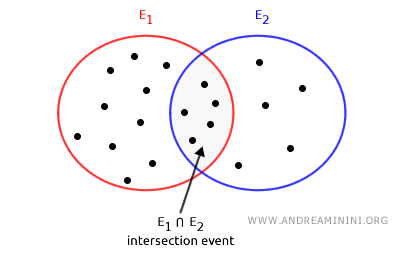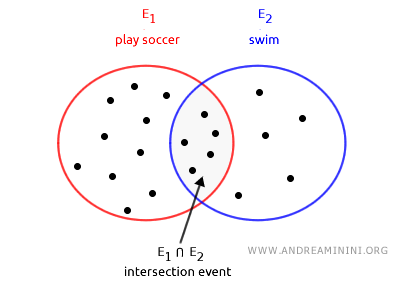Intersection Event
The intersection event occurs when two or more events within the same universal set happen simultaneously. $$ E_1 \cap E_2 $$
This type of event is also referred to as a "logical product".
The intersection of events allows us to determine the probability of multiple events occurring at the same time.
In probability theory and statistics, events are often visualized as set intersections.

Note: Although the notation for events uses symbols similar to those in set theory, it doesn’t directly represent the operations of intersection or union between sets. Rather, it indicates simultaneity (intersection event) or alternation between events (union event).
This concept is useful for analyzing situations where multiple conditions need to be met at the same time.
Practical Example
Consider a class of 30 students. Among these students:
- 15 play soccer
- 10 swim
- 5 engage in both soccer and swimming
Let’s define two events: E1 and E2
$$ E_1: \ \text{The student plays soccer.} $$ $$ E_2: \ \text{The student swims.} $$
The intersection event of E1 and E2 represents the students who play both soccer and swim.
$$ E_1 \cap E_2: \ \text{The student plays soccer and swims.} $$
Based on the information provided, we know there are 5 students who fall into this category.
Thus, the intersection event E1∩E2 applies to these 5 students.

In terms of sets, this corresponds to instances where there are elements that belong to both set E1 and set E2.
And so on.
